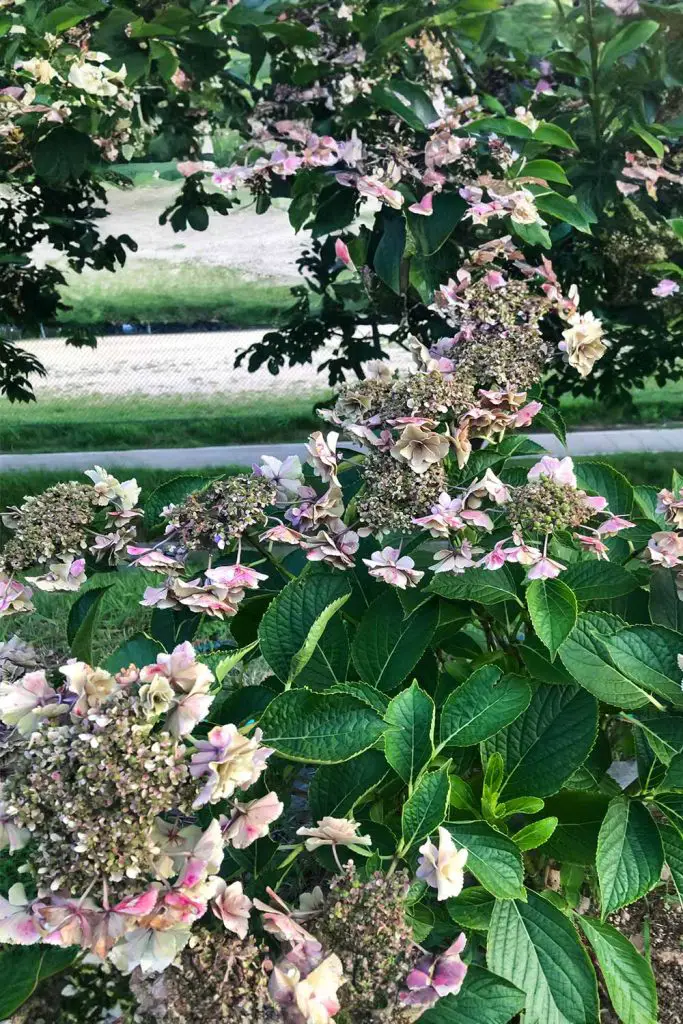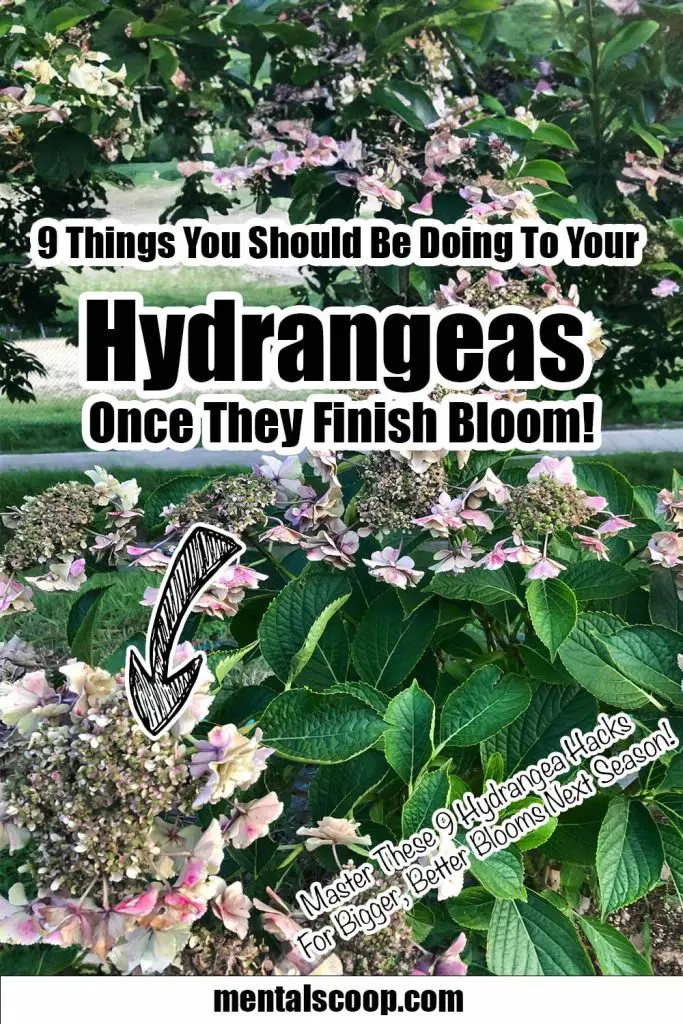9 Things You Should Be Doing To Your Hydrangeas Once They Finish Bloom!

Hydrangeas are a beloved staple in many gardens, known for their large, colorful blooms that create an air of elegance and beauty. However, when those lush blossoms start to fade and fall, many gardeners are left wondering what comes next.
Just because your hydrangeas have stopped flowering doesn’t mean your job is done! To ensure they come back stronger and more vibrant next season, there are several essential tasks to undertake once the blooming season ends.
Let’s explore 9 things you should be doing to your hydrangeas once they finish blooming so they can thrive year after year.
Deadheading for a Neat Appearance
Once your hydrangea flowers begin to fade, it’s time for a good deadheading session. Removing the spent blooms not only tidies up the plant, but it also prevents the plant from wasting energy on seed production. Simply snip off the spent flowers just above the first set of healthy leaves.
Deadheading ensures:
- A neat, orderly appearance.
- Encouragement of new growth, leading to healthier plants.
- Prevention of diseases that might develop in rotting flowers.
However, be cautious with Hydrangea macrophylla (bigleaf hydrangea) since they bloom on old wood. Deadhead without trimming the stems, or you risk cutting off next year’s flower buds!
Pruning at the Right Time
Pruning hydrangeas is crucial for controlling their shape and encouraging the next season’s blooms. However, not all hydrangeas should be pruned the same way or at the same time.
Hydrangeas that bloom on new wood, such as Hydrangea paniculata and Hydrangea arborescens, can be pruned in late winter or early spring. On the other hand, Hydrangea macrophylla and Hydrangea quercifolia bloom on old wood, so any major pruning should be done immediately after flowering.
Important tips:
- For new wood bloomers, prune heavily in late winter to promote new growth.
- For old wood bloomers, prune lightly, and only after blooms have faded.
This strategic pruning not only keeps the plant healthy but ensures a fuller, bloom-filled season.
Fertilize for Strong Roots and New Growth
Once your hydrangeas have finished blooming, they are entering a critical phase where they need extra nutrients to recover from the intense blooming period. A well-balanced, slow-release fertilizer is ideal to encourage strong root development and robust foliage growth. Apply fertilizer in the fall, but avoid high nitrogen formulas as they encourage foliage at the expense of blooms.
- Look for a fertilizer with balanced amounts of nitrogen, phosphorus, and potassium (e.g., 10-10-10 or 12-4-8).
- Hydrangeas benefit from a phosphorus boost to enhance root strength for the next bloom cycle.
Feeding your plants now ensures they have the energy reserves to produce vibrant flowers next year.
Mulching to Conserve Moisture and Regulate Temperature
Hydrangeas love moisture, but they also hate having their roots soaked in standing water. A layer of organic mulch around the base of your plants can be incredibly beneficial. Mulch helps to retain moisture, keeps the soil cool, and prevents weeds that might compete with your hydrangeas for water and nutrients.
Ideal mulch materials include:
- Pine bark
- Shredded leaves
- Straw
- Wood chips
Apply a 2-3 inch thick layer around the base of the plant, but keep it a few inches away from the stem to avoid rot. Mulching is especially important in climates with hot summers or harsh winters, as it helps regulate soil temperature.
Watering Properly (Especially in Fall)
Hydrangeas are known for their love of water, but once their blooms have faded, it’s important to adjust your watering schedule. While they don’t need as much water as they do during their peak growing season, hydrangeas still require a deep watering session at least once a week, especially during dry spells in fall. Focus on watering early in the morning or late afternoon to avoid evaporation.
Key watering tips:
- Water at the base of the plant, avoiding the leaves to prevent mildew.
- Hydrangeas in pots will need more frequent watering as container soil dries out faster.
Remember, a well-hydrated hydrangea heading into winter is less likely to experience stress or damage from cold temperatures.
Amend the Soil to Adjust pH Levels
One of the unique features of hydrangeas is their ability to change bloom color based on soil pH. If you’re looking to enhance or alter the color of your blooms next season, now is the time to test and amend your soil.
- For blue blooms: Acidic soil with a pH below 6 encourages blue flowers. Add aluminum sulfate or organic matter such as coffee grounds or pine needles.
- For pink blooms: Alkaline soil with a pH above 7 encourages pink blooms. Add lime to raise the soil’s pH.
Amending your soil now gives these materials time to take effect before the next bloom cycle, ensuring vibrant color in the spring.
Remove Weeds and Debris Around the Plant
Weeds compete with your hydrangeas for water, nutrients, and light. After the blooming season, take the time to clear out any weeds and fallen leaves around the base of the plant. Weeds can also harbor pests and diseases, which could harm your hydrangeas during their dormant period.
Regularly weeding your garden bed not only protects your plants, but it also gives them the space to grow without competition.
Check for Pests and Diseases
Even after flowering, hydrangeas are susceptible to pests and diseases. Take this time to closely inspect your plants for any signs of trouble, such as powdery mildew, aphids, or leaf spots. If you notice any issues, treat them promptly to prevent further damage.
Common pests and diseases to watch for:
- Aphids: Tiny, soft-bodied insects that cluster on new growth.
- Spider mites: Microscopic pests that can cause yellowing leaves.
- Leaf spots: Fungal or bacterial infections that create dark blotches on leaves.
Use organic pest control methods like neem oil or insecticidal soap if you encounter pests. Early intervention will save your hydrangeas from long-term damage.
Prepare for Winter Protection
In regions with cold winters, hydrangeas need a little extra care to survive frost and freezing temperatures. Before winter arrives, protect your hydrangeas with burlap, frost cloth, or even a simple layer of mulch to insulate their roots and stems.
For cold climates:
- Wrap the base of the plant with burlap or frost cloth to protect old wood bloomers from freezing temperatures.
- Mound extra mulch around the base to insulate the roots from frost heaving.
If your area experiences mild winters, your hydrangeas should be fine with just a layer of mulch. However, taking this extra step ensures your plants make it through the winter unscathed and ready to bloom again next year.
Set Your Hydrangeas Up for Success!
Taking care of hydrangeas after they finish blooming is crucial for their long-term health and next season’s success. From deadheading to preparing for winter, these 9 essential tasks will ensure your hydrangeas stay vibrant and healthy, year after year.
By giving them the right attention now, you’ll be rewarded with stunning blooms and vigorous growth when the next gardening season rolls around.
Don’t let your hydrangeas fade into the background—start your post-bloom care routine today and watch your garden thrive!

More interesting articles you may be interested in reading:

